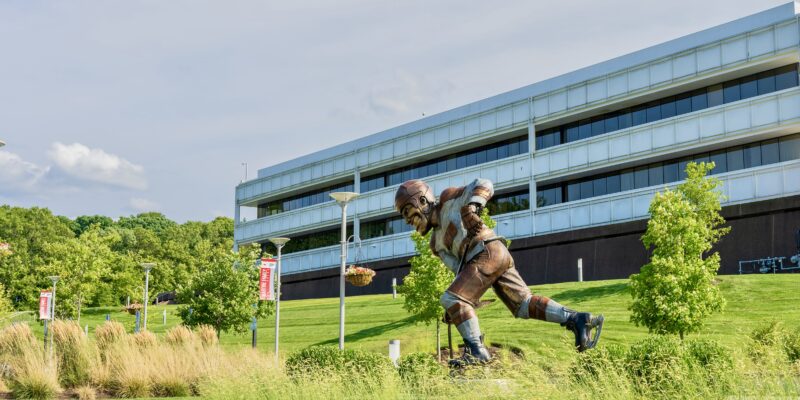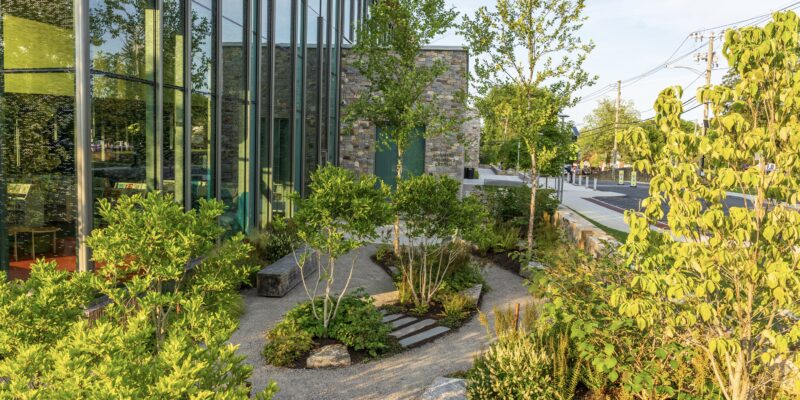What does it mean when we call a landscape beautiful? Is it its sense of wonder; its ability to define space and create community… or is it beautiful simply because of the way it makes you feel?
Making college campuses beautiful is as much about the people behind the scenes as it is the architecture and uniqueness that gives a campus its sense of place..
From landscape and sustainable improvements to specialty gardens for public art installations, creating an environment that not only reflects your institution’s values and identity, but also fosters a sense of pride, goes beyond aesthetics. While beauty is important broader objectives – such as creating a lasting legacy that become’s part of the institution’s brand – is important, too.
We’ve been building our award-winning campus resume for fifty years, working with public and private K-12, land grant universities, and the Ivy League. During that time, we learned that there are several success factors we can all agree on: the health and vitality of the soil and plant life, the well-manicured lawns and gardens, forested areas, healthy habitats and watersheds, and the quality and safety of well-kept grounds.
Whether you’re pursuing LEED credits, looking to improve environmental performance, or seeking insight to support investment decisions, there’s plenty to do over summer. Here are a few ideas to get started…
- Create Showcase Flower Beds – Create wow-worthy focal points and areas for lasting impact year-round but especially in fall when a new crop of freshmen will remember their first day of school for the rest of their life.
- Go Team! – Plant annuals and perennials in your school colors for game day, every day.
- Dress Soil – Freshen up beds with applications of mulch and compost because it not only looks and smells good, but it also contains nutrients that strengthen roots.
- Prune Trees – Open up the foliage with natural pruning. It makes small trees and shrubs look better than nature intended and promotes healthy growth.
- Out with the Old – Landscapes and plants have life cycles. Replacing worn turf with drought-tolerant ground cover, eco lawns, or new sod is a quick and cost-effective way to modernize areas that are out of date.
- Upgrade Site Infrastructure – Improve groundwater filtration systems using vegetative swales and erosion control to prevent runoff, puddling, and mud, which also improves pedestrian safety.
- Embrace Sustainable Practices – Align your master landscape plans with your master plan to optimize energy, fuel, cost, air and water quality, and zero waste.
- Get Smarter About Water – Smart irrigation tech is the right choice to improve irrigation performance and water use, and conservation and drought management.
- Create a Sense of Place – Dress up sports fields, donor-named buildings, theater courtyards, academic halls, and quads and common areas and outdoor classrooms are high traffic high visibility pedestrian zones and are the most memorable spaces in campus life.
Are you interested in learning more?
Contact Ted Marron
Email: tmarron@easternland.com
Phone: 203-817-4719




